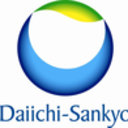Galectin-1-mediated cell adhesion, invasion and cell death in human anaplastic large cell lymphoma: regulatory roles of cell surface glycans.
الكلمات الدالة
نبذة مختصرة
Galectin-1 is known to be one of the extracellular matrix proteins. To elucidate the biological roles of galectin-1 in cell adhesion and invasion of human anaplastic large cell lymphoma, we performed cell adhesion and invasion assays using the anaplastic large cell lymphoma cell line H-ALCL, which was previously established in our laboratory. From the cell surface lectin array, treatment with neuraminidase from Arthrobacter ureafaciens which cleaves all linkage types of cell surface sialic acid enhanced Arachis hypogaea (PNA), Helix pomatia (HPA) and Phaseolus vulgaris-L (L-PHA) lectin binding reactivity to cell surface of lymphoma cells suggesting that neuraminidase removes cell surface sialic acid. In cell adhesion and invasion assays treatment with neuraminidase markedly enhanced cell adhesion to galectin-1 and decreased cell invasive capacity through galectin-1. α2,6-linked sialic acid may be involved in masking the effect of the interaction between galectin-1 and cell surface glycans. H-ALCL cells expressed the β-galactoside-α2,6-sialyltransferase ST6Gal1. On resialylation assay by recombinant ST6Gal1 with CMP-Neu5Ac, α2,6-resialylation of L-PHA reactive oligosaccharide by ST6Gal1 resulted in inhibition of H-ALCL cell adhesion to galectin-1 compared to the desialylated H-ALCL cells. On knockdown experiments, knockdown of ST6Gal1 dramatically enhanced cell adhesion to galectin-1. N-glycosylation inhibitor swainsonine treatment resulted in enhancement of cell adhesion to galectin-1. In glycomic analysis using the lectin blocking assay treatment with PNA, Artocarpus integrifolia (Jacalin), Glycine max (SBA), Helix pomatia (HPA), Vicia villosa (VVA), Ulex europaeus (UEA-1), Triticum vulgaris (WGA), Canavalia ensiformis (ConA), Phaseolus vulgaris-L (L-PHA), Phaseolus vulgaris-E4 (E-PHA), Datura stramonium (DSA) lectins resulted in modulation of lymphoma cell to galectin-1 suggesting that several types of glycans may regulate cell adhesion to galectin-1 by steric hindrance. The adhesive capacity of H-ALCL cells is regulated by phosphatidylinositol 3 phosphate kinase (PI3K) and actin cytoskeleton, and the invasive capacity of H-ALCL cells is regulated by PI3K, mitogen-activated protein kinase (MAPK), Rho and actin cytoskeleton. Furthermore, galectin-1-induced cell death in H-ALCL cells was accompanied by inhibition of CD45 protein tyrosine phosphatase (PTP) activity. In conclusion, cell adhesion and invasion to galectin-1 appeared to be regulated by cell surface sialylation and N-glycosylation, and galectin-1 regulates cell death through inhibition of CD45 PTP activity of H-ALCL.


